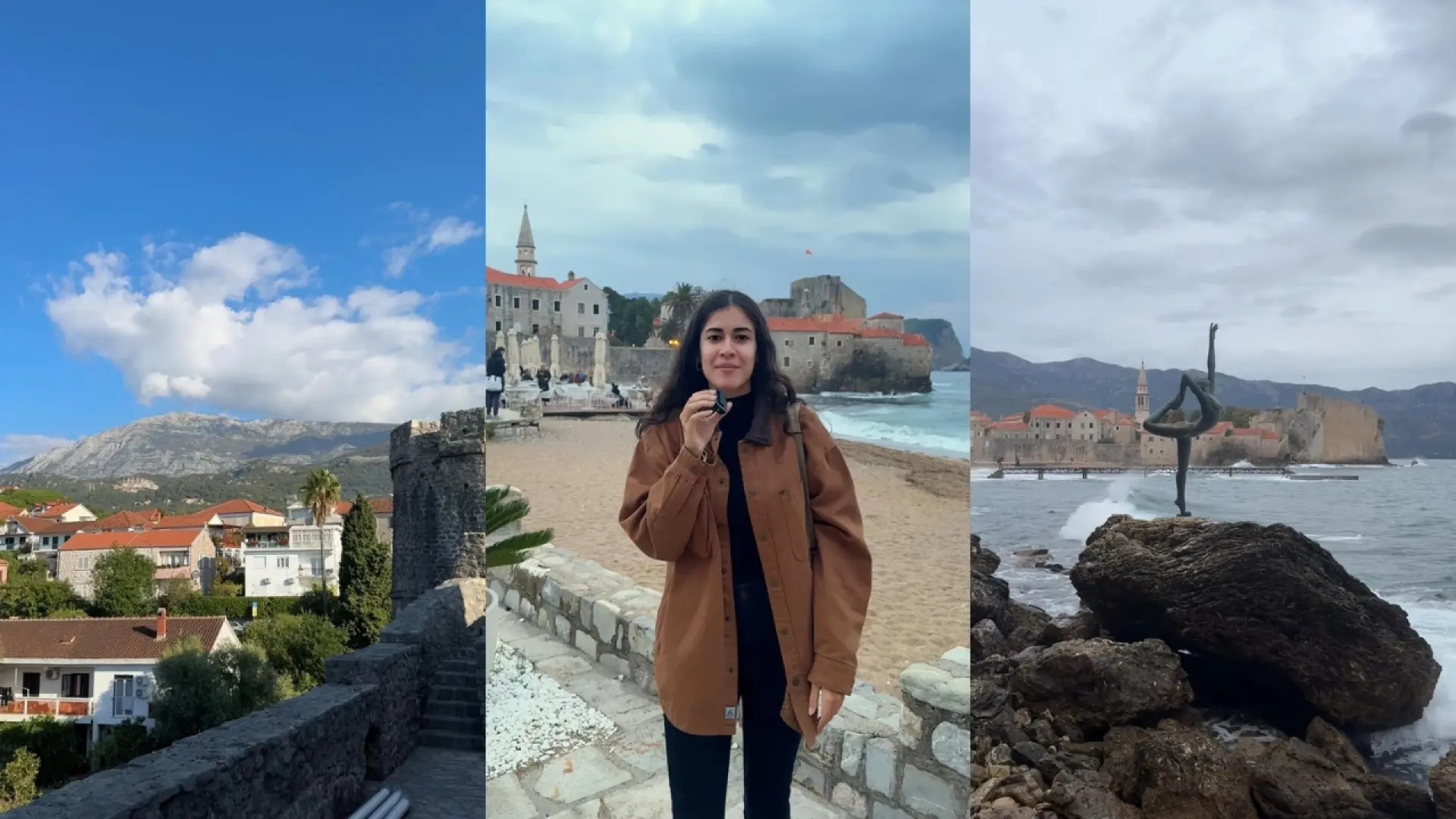Touring Montenegro's blue jewel: between mountains and fishing villages in the Bay of Kotor

Ivo Visin had a dream: to save enough to buy a ship and set sail as a merchant. But what he achieved was much grander: becoming a legend in Montenegrin history . Between 1852 and 1859, this adventurer born on the shores of the Bay of Kotor (or Boka Kotorska) tirelessly traveled the globe, becoming the first person from this region to circumnavigate the globe.
This story reflects the seafaring spirit of the Bokelians , a people whose hearts are divided between a calm, silent sea and the thunderous beauty of the mountains. But the maritime influence is not the only thing that has shaped the essence of the Bay of Kotor. The Ottomans, the Venetians, and the Austro-Hungarians passed through these privileged lands, leaving behind pieces of their culture like breadcrumbs.
Also known as "the bay of saints" for its vast number of churches, which would take us more than a year to visit, it draws us in with its salty air, its red-roofed villages , and its vast culture that can be read like an open book in its streets.
Herceg Novi or the best welcome to Boka KotorskaLike an embrace that never quite closes, two enormous elongated peninsulas, one Croatian and the other Montenegrin, approach each other, stifling the entrance to the Bay of Kotor from the open sea, leaving a mere 340 meters between them at their narrowest point. And as if we were Ivo Visin returning home after his naval voyage, the first city we'll see upon crossing the Verige Strait and entering the mouth of Kotor is Herceg Novi , which stretches impassively at the foot of Mount Orjen.
The perfect balance it maintains between the Adriatic and the Dinaric Alps is not replicated in its history, which could be described as "turbulent," as tour guide Milena Kovačević explains. Founded in 1382, this city is the only one in the Bay of Kotor that was controlled by the Ottomans , for exactly 200 years. Proof of this is the Kanli Kula fortress , which translates as "bloody tower," built in 1539 as a prison. That grim name is now forgotten, and in the 1960s it was converted into an open-air venue hosting all kinds of festivals and cultural events.
Following the sea breeze, we will descend towards the lower part of the city, but not before coming across such special places as Nikola Djurkovic Square , The heart of Herceg Novi, a space of pastel-colored facades watched over by the 16-meter-high Clock Tower . Erected in 1667 by the Ottomans, in its original version it indicated prayer time and was the main entrance to the town. Just one street away is the Church of St. Michael the Archangel, an eclectic gem that reflects the cultural melting pot that emanates from the city's history. Byzantine, Romanesque, and Gothic elements characterize its structure, also marked by a clear influence of Ottoman architecture. A golden tympanum with the figure of the archangel holding scales and a sword welcomes us inside: a small space dominated by a white marble iconostasis.
Already on the shores of the bay stands the Forte Mare , which has looked out over the maritime horizon since the 14th century, once protecting the city from enemy attacks, now offering us a breathtaking and unforgettable panorama. And at the foot of the fortress, 6 kilometers of seafront promenade , with its salty scent, compel us to try local delicacies on the terrace of a restaurant or dive into the crystal-clear waters of a small beach . Because yes, between history and art lessons, there's still time for relaxation.
Perast: a street, an island and a churchIt was dawn on an ordinary day in 1452 when two brothers went fishing after days of heavy rain. It was then that they came across something completely unexpected: a painting of the Virgin and Child . " It most likely fell from one of the passing ships, because there was a lot of maritime trade at that time," explains Milena. Other stories that emerged later merge with legend and mysticism; for example, it is said that one of the brothers was cured of his illness by praying to the painting and that the work of art returned to the island on its own after being brought ashore.
Be that as it may, the brothers, along with the residents of Perast, decided to build an artificial island to erect a chapel to house the painting. And so it was. For almost 200 years, this small islet was created, bringing stones from the shore in small boats. "We still have that tradition of building the island," the guide tells us. Every July 22, a boat procession known as Fašinada takes place, and rocks are symbolically thrown to make the island "grow." "This year we celebrated the 574th," he explains.
Today, the image of the Church of Our Lady of the Rocks , surrounded by a calm sea and watched over by the watchful eyes of craggy peaks, has become one of the undisputed symbols of Montenegro. Under the intricate coffered ceiling, the interior of the church displays a large collection of votive pieces from ancient sailors. "For many, the Virgin was a symbol of a mother who protected them while they were so far from everything they knew," he explains. What was once the home of the island's protector is now an interesting museum filled with donations from all over the world.
Back on dry land, it's time to explore the streets of Perast , although it would be better to use the singular. A single street runs through the town from one end to the other, with the gentle crashing of the waves on one side and a compact cluster of houses on the other. Here, in addition to looking up to marvel at the mountains that plunge steeply into the sea, we'll also admire the slender tower of St. Nicholas Church , which reaches 55 meters high and reaches almost to the sky.
Kotor, in the depths of the bay"Welcome to the most beautiful town in the world !" says Milena Kovačević happily. Perhaps it's because her job as a guide is to show off the wonders of each destination. Or perhaps it's because she was born there and proudly boasts about her city. But her words reveal a profound truth: Kotor is well worth the title. The beauty of this town nestled in the bay of the same name is felt the moment you set foot there.
At first glance, it seems insurmountable, with its robust stone walls that stretch for 4.5 kilometers, but the Sea Gate allows us to enter its historic center. We then find ourselves in the Plaza de Armas , where the arsenal used to be located. This space full of terraces, where the bustle of tourists is constant, is dominated by the Clock Tower , one of the great symbols of the city. This building, slightly tilted due to an earthquake in 1979, was built in 1602, and today, the fifth generation of the same family is in charge of winding its mechanism every morning.
The next stop is the Cathedral , which has stood imposingly with its two towers since 1166. Built in the Romanesque style under the patronage of Saint Tryphon, it is a huge cultural icon for the inhabitants of Kotor. "As children, we learn that the cathedral has been here since before we were born and will remain here when we are gone," Milena tells us. This temple is Catholic, but nearby we find two Orthodox churches, the only ones of this branch of Christianity in the historic center of the city. The St. Luke's , small and sober, dates from 1195, while the St. Nicholas's is the newest monument in the city, built in 1909 on the ruins of an older building dedicated to the same saint, protector of sailors.
And as they say, the icing on the cake arrives. We separate our feet from the ground with a cable car that, in just a few minutes of visual pleasure, takes us to Mount Lovćen , once again showing us that duality between sea and mountain. There at the top awaits a panoramic café, various viewpoints, and an attraction only suitable for the brave: an alpine mountain that hurtles us towards the sunset like a rocket. From 1,348 meters high and with the wind whistling in our ears, we can see our own footprints and see from above everything we have visited, while the landscape merges with the interplay of the Dinaric Alps reflected in the waters of the Adriatic.
20minutos





